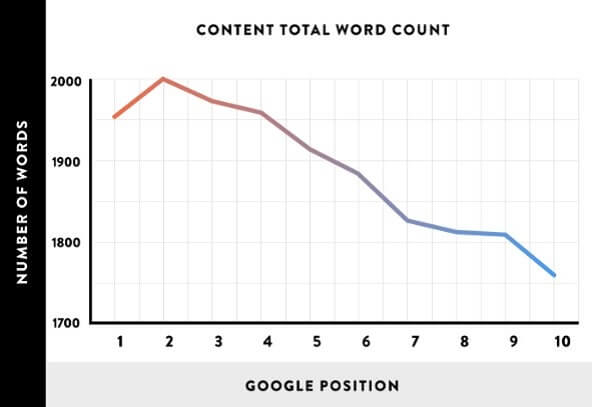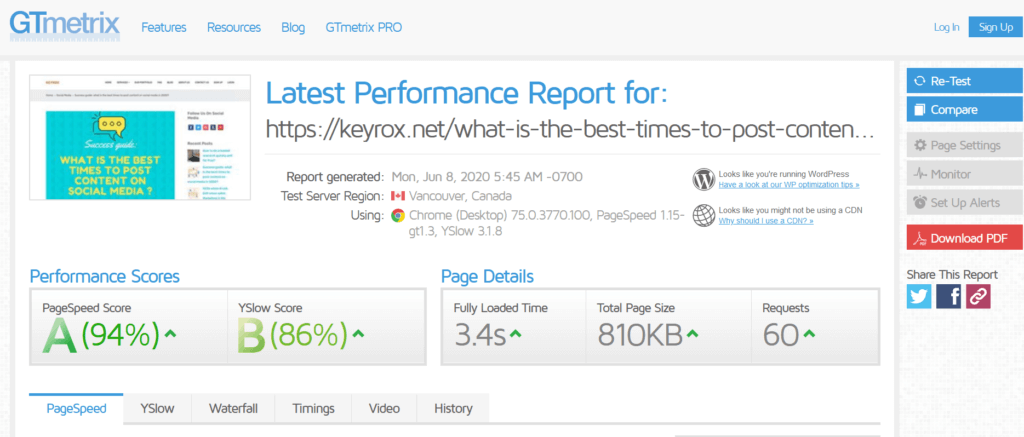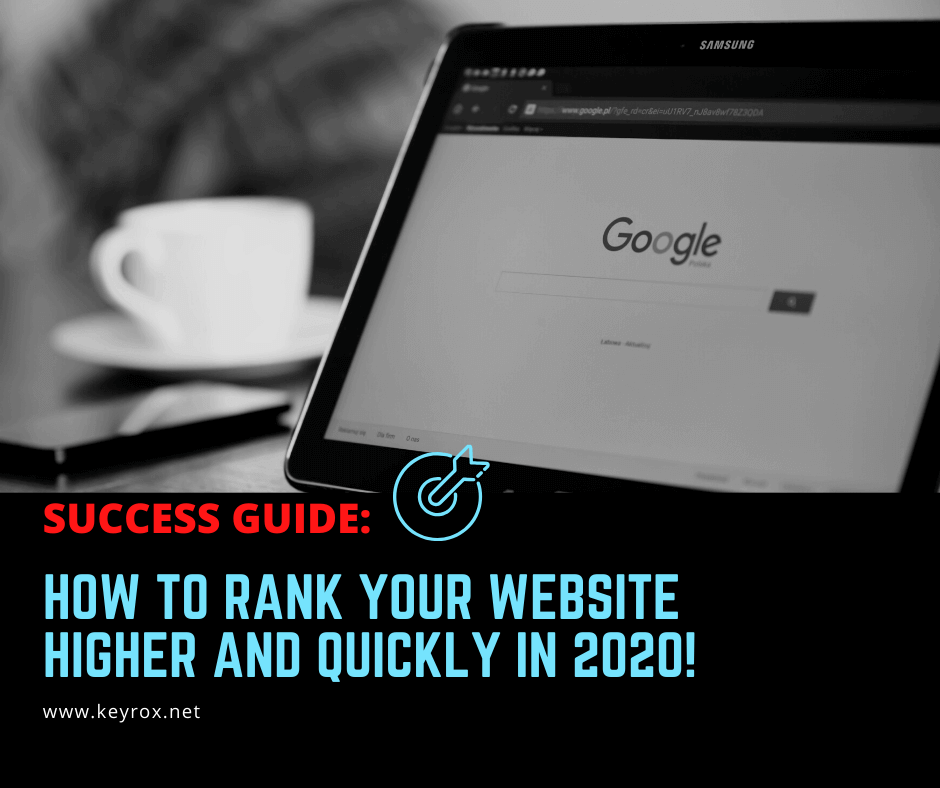Success Guide: How to rank your website higher and quickly in 2020! 10 Essential tips!
Ranking your website higher and quickly is the dream of every blogger, youtuber, and website owner in general. Thankfully, by following the correct strategy, it is going to be easy to improve your website ranking in search engines. Please note, that if your website is fresh and new, it is going to take you at least 3 months before you start seeing positive results about your ranking.
Without further ado, So, here are the top 10 Essential tips to SEO your website quickly in 2020, and rank higher in search engines for specific keywords depending on your website niche.
1 – Anticipate trends to capture traffic
Google has a very strong inertia: it is difficult to quickly dislodge well placed sites on requests, and the growth of a new site is naturally slow with steps.
On the other hand, it is possible to anticipate recurring trends (eg: international events, trending products, breaking news, etc…) or occasional trends (eg: the release of a new smartphone…), and thus hope to capture a peak of traffic underestimated by your competitors.
By preparing for it several weeks or even months in advance, you will be able to position yourself on very high potential research before anyone else.
The principle is simple: locate a major event related to your website niche of the coming year and position yourself on this request 3 or 4 months in advance.
For example, you want to gain visibility on the new Iphone release, with the objective of appearing in Google searches to catch visitors, try to come up with posts about (ex: reviews about the new Iphone , Should you upgrade to the new Iphone? differences between the old Iphone and the new one, the new features of the new Iphone, etc..).
Before you start, check already that there is a peak of news, and if possible that the volume of searches is growing from year to year (in order to capitalize on your work).
You can use Google Trends for this:

Anticipate trends to capture traffic
Reading this graph, we see a peak in the keyword every year in September, the date of the release of a new Iphone.
The traffic is not growing (it is even rather stable), but this confirms that there is an opportunity to exploit.
It remains to define on which keywords to position in order to be visible on Google.
The goal is to check the expressions with the most volume, in particular the most typed expression (the target) and those which are secondary (linked keywords which will be the subject of related articles).
This analysis will also make it possible to start only if the volume of research is profitable, and the competition is not too hard.
For example you can use WORDSTEM to analyze “The new Iphone” keyword for free:

search keyword cpc for free
The volume of this expression is medium, but it does not necessarily take into account the September traffic spike.
The analysis of related keywords also makes it possible to identify related keywords.
Similarly we can see the difficulty of referencing (competition, set as high), which indicates that it is going to be hard to rank your website on this keyword.
You can also type the keyword into Google, and see the phrases you are looking for at the very bottom of the page.
For example :

how to find related keywords on google
This makes it possible to identify additional keywords such as “Iphone 11 price”, “Iphone 11 pro max” … which can also be the subject of either “major” articles or secondary articles to reinforce a main article.
Once the analytical work has been done, it only remains to list the priority keywords, and to create optimized pages on these keywords, either with an internal editor or with an external editor.
2 – Increase the size of your articles
Here is a recent study on the impact of the number of words on the positioning of an article in Google:

size of articles
Admittedly, a very effective small article (viral, with a polemical point of view…) can very well give an “intellectual orgasm” to your readers, but more often it will be more effective to have a good large article with details to rank higher in Google.
For example, in a topic like Search Engine Optimization, articles of 500 words are almost useless on normal expressions.
Possibly, they can be used on secondary expressions of several words, or to improve the referencing of a main article, but the standard is now more than 1000 words.
The justification for a large item is as follows:
It is essential to have the maximum amount of time spent on a page in order to “prove” to Google that your article is of good quality.
One of the most effective ways to get links, time spent on a site … is to go around the whole subject, and no longer stay on the surface with generalities as you would with a 500-word article. It is 10 times more complicated to write a great article in 500 words, than to go around a subject in 3000 words … Hence the importance of making long articles (and quality!).
In order to stay in the Top of Google for very competitive keywords, you have to write long posts.
What you need to do is simple:
- For your new articles, increase the minimum number of words to write to 1500 words.
- Impose yourself to bring a minimum of added value in all your articles.
- Reinforce your old articles by adding content in order to reach the new critical mass.
3 – Think multichannel and not just “Google search engine SEO”
To be visible on Google, it is necessary to add value, and often via more complete and longer content.
This involves capitalizing on the effort that has been made to produce content for multi-channel and multimedia content, and not just in text format.
For example, a blog article must be re-used in another form (video, podcast, image, etc.) in order to capitalize on the time spent writing.
For example, this article will be reused as:
- A Summery to be distributed on Facebook, Twitter, Pintrest, etc…
- An explanatory video to be shared on Youtube.
Thus, it becomes profitable to produce a long article, since it will generate traffic on other platforms.
What you need to do: In your next pillar article (over 1500 words), re-use it via a Social media, or even as a Ebook, then share the PDF to your audience.
4 – Traffic is good, but conversion is better!
A mistake often made in SEO is to take as a success indicator the positioning on Google of strategic keywords, as well as the traffic generated.
But this is just the tip of the iceberg: what matters even more is the conversion with the number of qualified leads generated by the articles, therefore, it is essential to maximize the conversion.
By implementing different strategies, like bot chat, push up notifications, and of course newsletter which will not only help you to be able to sell your products and services, but you will also be able to get them back on your website in order to bring more “credibility” to your strategic pages. and your new content.
It is necessary to pay particular attention to the pages with the most traffic (articles, pages like “About Us” …), in order to optimize the conversion on these key pages of the site.
To do this, simply go to Google Analytics, and display the report “Behavior”> “Site content”> “Details by URL”.
To have a better view of your performance, make a comparison between this year and the past year over 1 month to see which pages are in decline (in order to boost them) and which are on the contrary.
What you should do:
- Identify the pages with the most traffic on your web site.
- Imagine how you can encourage people to give you their contact details or take action right away (e.g. calling, ordering, etc.)
- Improve the credibility of your contact capture forms.
Note: Be careful, however, not to do too much “Christmas tree” with notifications, pop-ups… in all directions on your main pages… this could scare your readers away!
5 – Track your situation on the Google Search Console
Google really simplifies the lives of SEOs with the Search Console: it allows you to analyze its SEO and see what would be the possible problems.
It is with the search console that you could see if you have been the subject of a manual penalty from Google, or on the contrary if you benefit from an increase in your visibility on the search engine. The advantage is to have a free tool that genuinely analyzes your traffic. But also an analysis of the main keywords generating traffic and the number of clicks when your site appears for specific queries.
You can integrate the Search Console into the SEO plugin “Yoast SEO“, which allows you to go further in indexing pages, but also in the Premium version to redirect on URLs not found on your site.
What you should do:
- Check “how Google sees your website” with the search console platform.
- Take the necessary corrective measures to improve the crawl, for example the Yoast plugin with a sitemap.
6 – Check the speed of your site and compatibility on Mobile
The speed of loading a website has become one of the major criteria, and reading on mobile (smartphone & tablet) is an obligation (on some news sites, mobile is 80% of visits!).
Indeed more and more traffic comes from mobile, and therefore even with a limited connection (H +, 3G …), your site must load in acceptable times.
You can test the speed of your site with many services:
For this, it is necessary to optimize the images, the scripts… as well as the availability in AMP
Again the Search Console will allow you to test: https://search.google.com/test/amp
You can also download the WordPress AMP plugin for your website: https://fr.wordpress.org/plugins/amp/

Check the speed of your site and compatibility on Mobile
Like you can see in the above screenshot, one of the previous Keyrox’s post scores A 94% in the PageSpeed Score which is consider an excellent result.
What you should do:
- Analyze your site with GT Metrix, and correct what is easy to do (ex: optimize images with Smush.it…).
- Make sure your site is AMP compatible
7- You have to amuse the reader and captivate him
We have entered the era of infobesity: there is such a mass of content that if you continue to offer boring and boring content, you will lose your readers.
Internet users want “content snacking”, “fast food” content, that is to say content that is easy to absorb, and simple to understand.
This does not mean that we must abandon long value-added content like this one … we just have to make them more digestible, and accept from time to time to make a small quick content (ex: an image, a comic, a short video, etc…).
Making content more digestible means:
- Add images, videos … to make the article readable
- Use bulleted lists
- Bold text
- Simplify your ideas
- Have an “oral” style
The long blocks of texts written by the kilometer, without illustration, are clearly over.
The tendency is also to put emotion in his texts.
That means :
- Tell personal stories (as in the introduction)
- To say that we think on a subject “without (too much) filter”
- Give examples of daily life
- Dare to say “I” in your articles
What you should do:
- For your most read articles, make a review to make them more pleasant to read.
- For your new articles, think about readability by adding, images, videos…
8 – Encourage your readers to share your posts
The battle for first place in Google is fought as soon as the results of the search page are presented.
Indeed, you have to make people want and give confidence to the user to share your posts in their social media.
What you should do:
- Install a sharing plugin on your website, and start evaluating all of your recent articles and top articles.
- Check that each article is minimally optimized thanks to Yoast SEO plugin.
9 – Get high quality back links to your website
It may seem a bit outdated to still talk about backlinks, but the fact remains that it is still one of the best ways to improve your positioning on Google. In my other website, I got a backlink to my website in Wikipedia. In the week after, the same article was ranking 2 in Google.
There are 2 reasons for this:
- If you have links to other sites, it is that your content is good because quality sites will indicate you as a reference for a keyword.
- By having “real” links on sites of your niche, you will get more traffic.
To get quality links to your website, you can:
- Either win them, by producing exceptional content, or by disseminating original studies and infographics.
- Either get them by seduction, by mentioning influencers, brands, etc… in your articles.
- Either buy them, pay for sponsored article campaigns.
- Either deserve them, for example by identifying broken links on a site and offering yours in addition.
- By offering guest posting.
10 – Use the right SEO tools to save time
To improve your SEO on Google, it is essential to use tools to save time and be more efficient.
Here is a selection of essential tools, most of which are free or Freemium.
- In a few seconds, get the most relevant keywords to put in your blog “tags”, in youtube videos… with InfiniteSuggest.com
- Steal your competitors’ traffic with SEMrush, SEOcockpit, ahref.com, similarweb.com… These tools allow you to see which articles generate the most keywords from a competitor as well as their backlinks. You can thus produce content specially to capture a little traffic from your competitors (by producing a more complete, richer article, which gets more links…).
- Follow the evolution of your positioning with tools like serposcope (serphacker.com), SEO soft, seoscope … You will see if you lose positions on your major keywords, or if you manage to position yourself on new keywords.
- Analyze the relevance of a page on a keyword with alyze.info. This lets you know if you were wrong when writing the article for 1 keywords.
- Analyze directly in Google results your website, your articles keywords… with Chrome extensions like keywordseverywhere.com, seoquake.com,
Over the years, SEO becomes more and more complex, there are both:
- more competition between bloggers who produce content by passion, companies which have colossal budgets in content marketing and off shore writers who produce articles at lower cost.
- more content, often poor quality content produced offshore, but also very high quality content produced by specialists, or even “automated” content (spinning, rerwiting, etc.).
- more technicality, because it is no longer enough just to write, it is necessary to optimize its content, the data structure
- To hope to emerge in the first on Google, it is now essential to think about its strategy, keywords, allocated budget, promotion tactics … like the 10 10 Essential tips presented in this article: How to rank your website higher and quickly in 2020!

